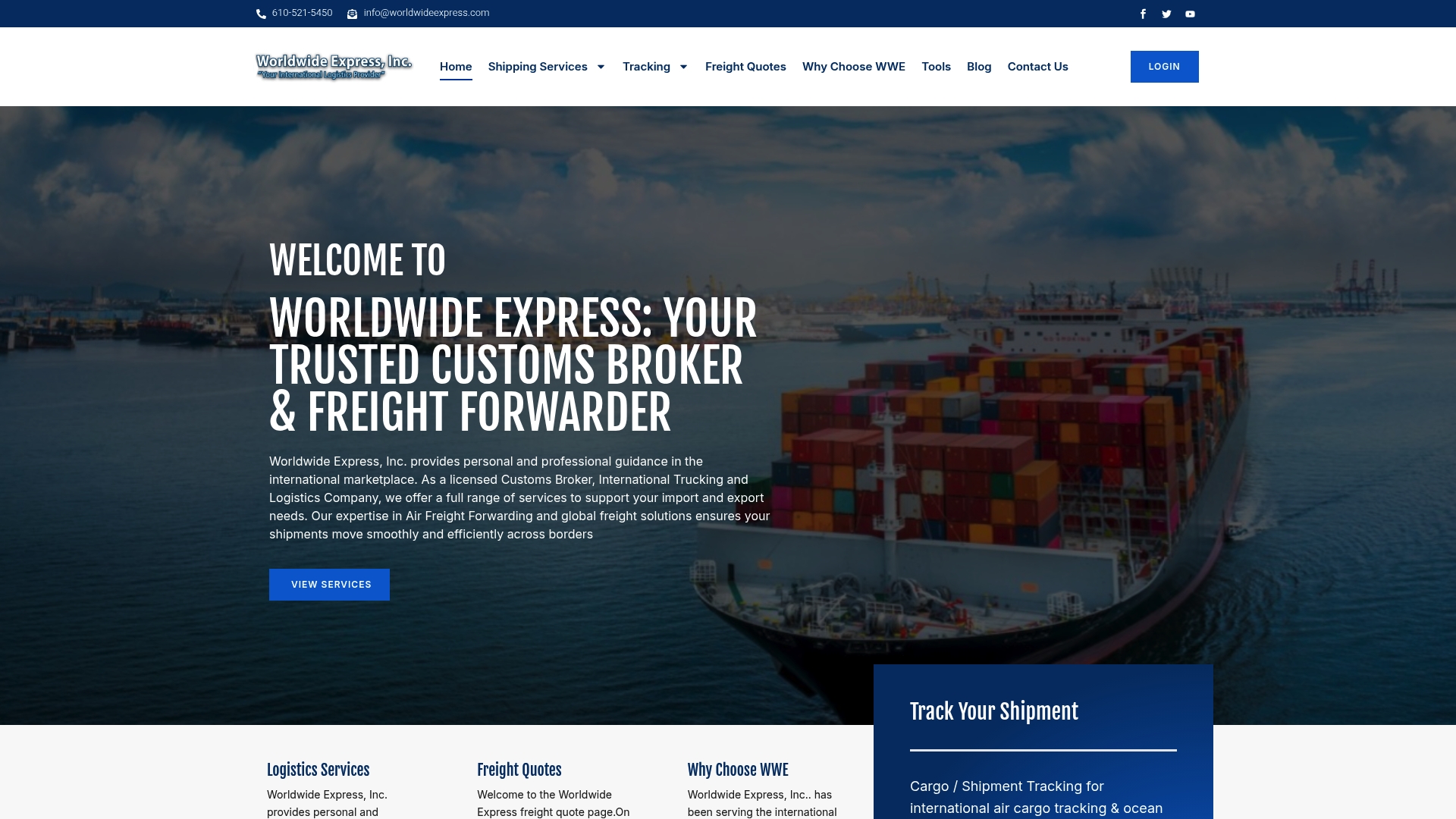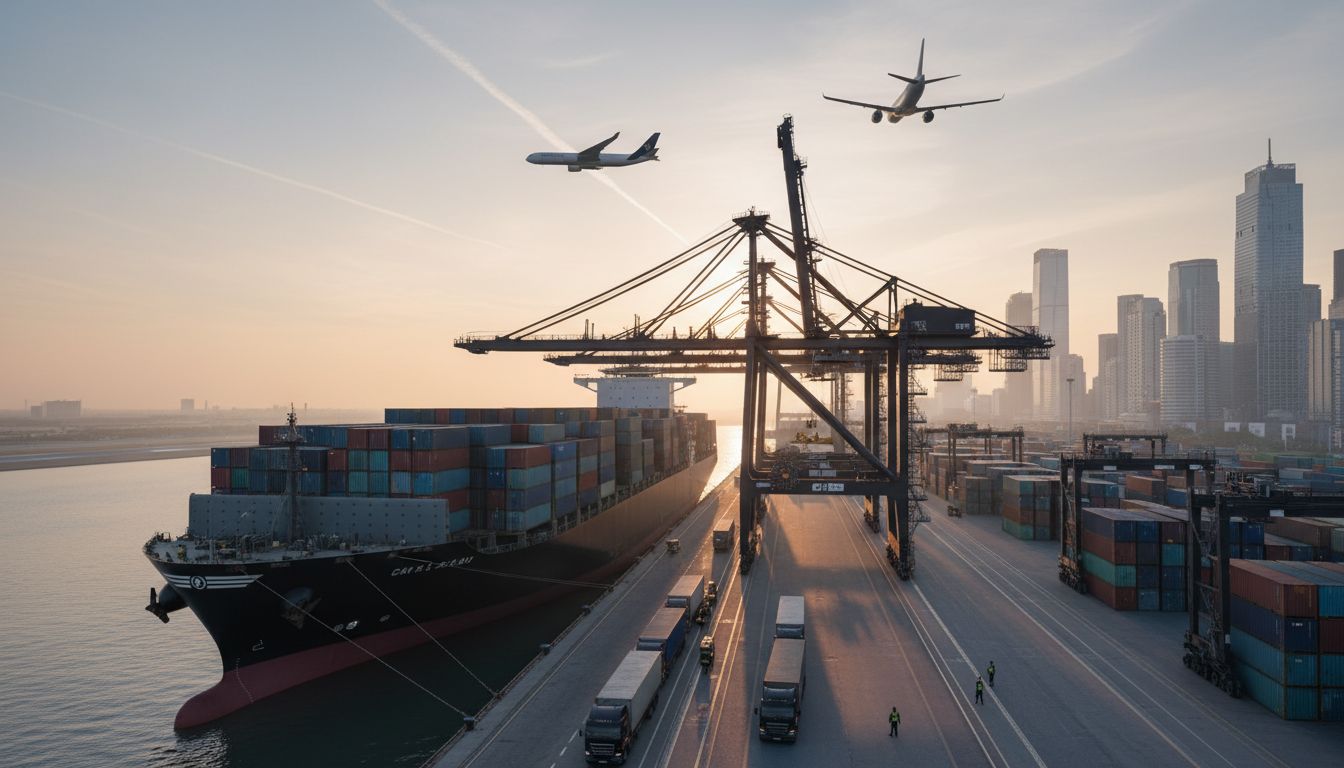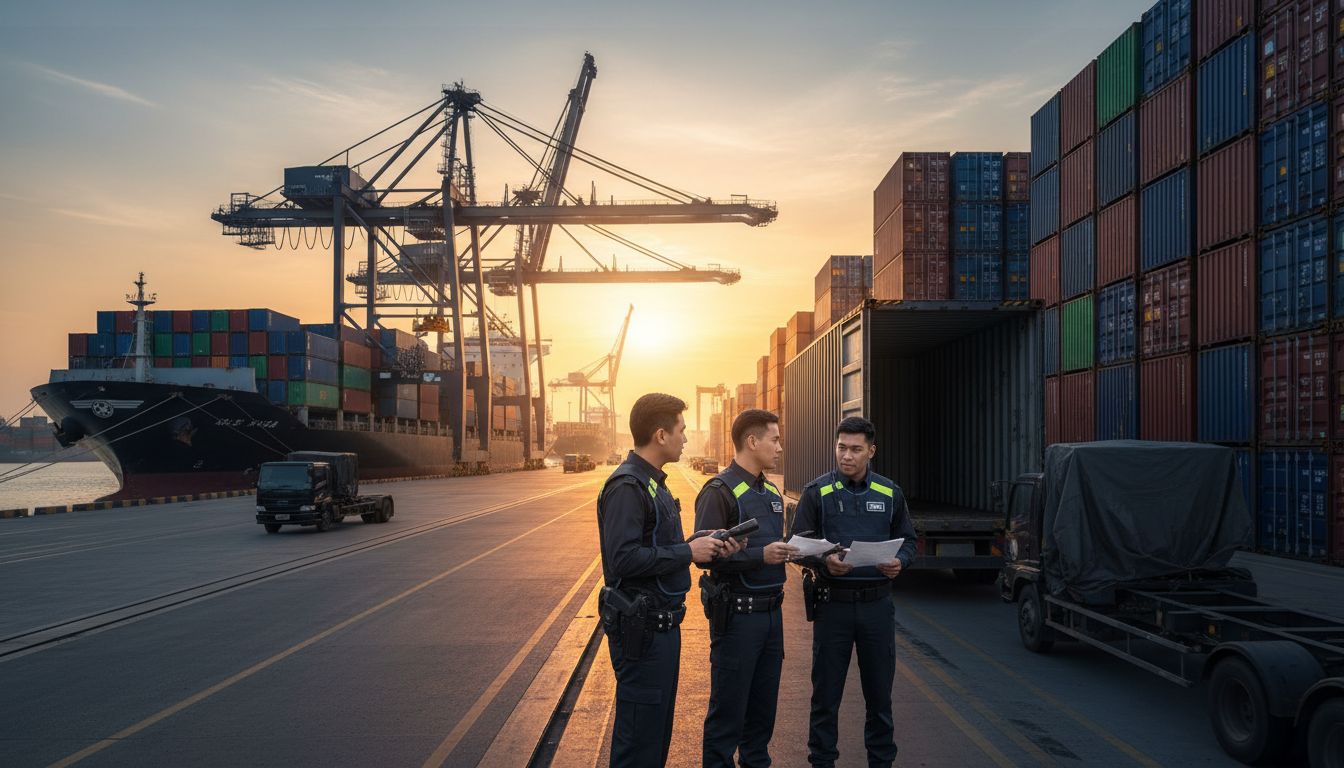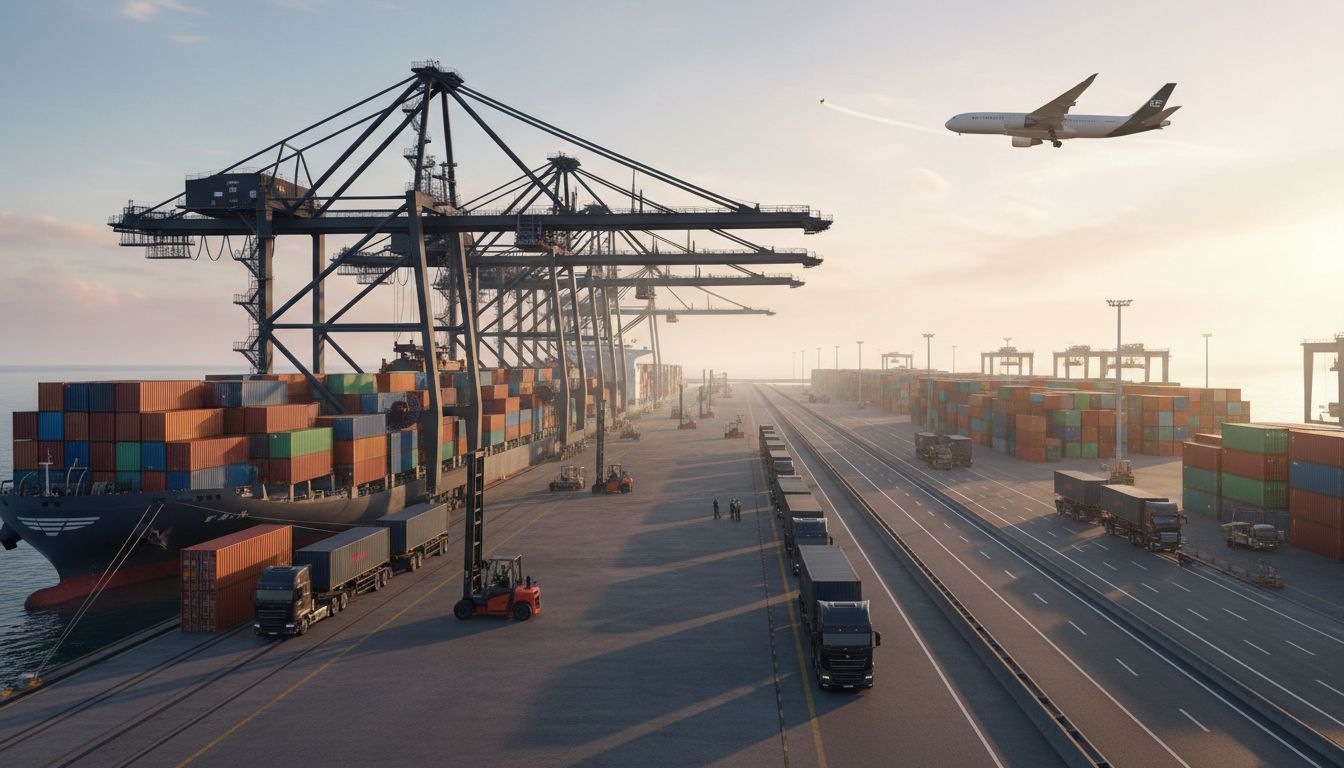Importer Security Filing is at the heart of customs compliance for anyone involved in international shipping and the stakes could not be higher. U.S. Customs and Border Protection can fine importers between $5,000 and $10,000 for each ISF violation. Many assume the rules are straightforward and that shipping partners will handle most of the paperwork. The reality is far stricter. A single missing data point or typo can freeze your shipment at the port and cost more than you bargained for.
Table of Contents
- 1: Understand The Purpose Of Importer Security Filing
- 2: Know The Required Information And Documentation
- 3: Verify Data Accuracy To Avoid Delays
- 4: Stay Updated On Filing Deadlines And Regulations
- 5: Utilize Automated Systems For Efficiency
- 6: Collaborate With Customs Brokers For Expertise
- 7: Regularly Review And Revise Your Filing Practices
Quick Summary
| Takeaway | Explanation |
|---|---|
| Understand ISF’s critical role in international trade. | Importer Security Filing enhances cargo security by requiring detailed shipment information before arrival in the U.S. |
| Ensure accuracy in documentation to avoid penalties. | Minor errors in required data can lead to costly fines and shipment delays, highlighting the need for thorough checks. |
| Stay updated on deadlines and regulations. | Compliance is an ongoing effort; knowing filing deadlines is vital to avoiding penalties and ensuring smooth operations. |
| Leverage automated systems for filing. | Utilizing technology can streamline the ISF process, reducing errors and improving processing times significantly. |
| Collaborate with customs brokers for expertise. | Customs brokers offer essential knowledge and support, enhancing compliance and simplifying the filing process. |
1: Understand the Purpose of Importer Security Filing
Importer Security Filing (ISF), also known as 10+2 filing, is a critical customs compliance requirement for international trade. This mandatory process requires importers to submit detailed shipment information to U.S. Customs and Border Protection (CBP) before goods are loaded onto a vessel destined for the United States.
The primary purpose of ISF is to enhance maritime cargo security and help authorities identify potential risks before shipments arrive at U.S. ports. By requiring comprehensive information about the cargo, shipping routes, and involved parties, CBP can conduct targeted risk assessments and prevent potential security threats.
Key aspects of Importer Security Filing include:
-
Providing 10 data elements about the shipment before it departs the origin country
-
Submitting 2 additional data elements from the carrier about the vessel and container
-
Ensuring accurate and timely documentation to avoid potential penalties
Failing to comply with ISF regulations can result in significant consequences. Importers may face monetary penalties, ranging from $5,000 to $10,000 per violation, and potential cargo holds or delays at customs. Learn more about importer responsibilities with our comprehensive guide on understanding importer of record responsibilities.
According to U.S. Customs and Border Protection, the ISF program plays a crucial role in improving supply chain security by providing advanced information that allows for more effective risk management and targeted inspection processes.
Successful implementation of Importer Security Filing requires meticulous attention to detail, proactive communication with shipping partners, and a thorough understanding of the specific data requirements. Importers must work closely with freight forwarders, carriers, and customs brokers to ensure all necessary information is accurately compiled and submitted within the mandated timeframes.
2: Know the Required Information and Documentation
Successful Importer Security Filing (ISF) hinges on comprehensive and accurate documentation. Importers must meticulously prepare and submit specific information well in advance of cargo shipment. Understanding the precise requirements helps prevent costly delays and potential penalties.
The core documentation for ISF includes several critical data elements that provide U.S. Customs and Border Protection with comprehensive insights into the incoming shipment. These elements serve as a comprehensive risk assessment tool for maritime cargo security.
Key documentation requirements encompass:
-
Shipper name and address at the point of origin
-
Consignee name and address for the final destination
-
Manufacturer details including full legal name and physical location
-
Harmonized Tariff Schedule (HTS) number for each imported product
-
Country of origin for each item being shipped
-
Container stuffing location
-
Consolidator information
Importers must recognize that documentation precision is non-negotiable. Even minor errors or omissions can trigger significant customs complications. Explore our detailed guide on bill of entry requirements for additional documentation insights.
According to U.S. Customs and Border Protection documentation guidelines, each submitted document must be complete, accurate, and submitted electronically through approved customs systems. Digital submission platforms have significantly streamlined this process, allowing for faster processing and more efficient risk assessment.
Professional tip: Develop a standardized internal checklist to ensure all required documentation is consistently collected, verified, and submitted before shipment. This proactive approach minimizes the risk of incomplete or incorrect filings and helps maintain smooth international trade operations.
3: Verify Data Accuracy to Avoid Delays
Data accuracy is the cornerstone of successful Importer Security Filing. Even minor discrepancies can trigger significant customs complications, potentially resulting in shipment delays, financial penalties, and disrupted supply chains. Importers must implement rigorous verification processes to ensure every detail submitted is precise and consistent.
Verification requires a systematic approach that scrutinizes multiple aspects of shipping documentation. Inconsistencies in data can lead to automatic red flags in customs systems, which may halt cargo movement and require extensive manual review.
Critical areas requiring meticulous verification include:
-
Shipper and consignee information matching exactly with registered business records
-
Harmonized Tariff Schedule (HTS) codes accurately reflecting the specific product classification
-
Weight and measurement details precisely aligned across all shipping documents
-
Manufacturer and origin details consistently represented without variations
Dive deeper into understanding importer of record responsibilities to enhance your compliance strategies.
According to U.S. Customs and Border Protection compliance guidelines, automated screening systems cross-reference multiple data points. This means a single inconsistency can trigger a comprehensive review process, potentially causing substantial shipping delays.
Professional importers leverage technology and establish robust internal verification protocols. This includes:
-
Utilizing digital verification tools
-
Implementing multiple checkpoint reviews
-
Creating standardized data entry templates
-
Conducting regular staff training on documentation precision
By prioritizing data accuracy, importers can streamline their customs clearance process, reduce potential penalties, and maintain a reputation for reliable international trade operations. Proactive verification is not just a compliance requirement but a strategic approach to efficient global logistics.
4: Stay Updated on Filing Deadlines and Regulations
Navigating the complex landscape of Importer Security Filing requires constant vigilance and proactive monitoring of evolving regulations and filing timelines. Importers must recognize that customs requirements are dynamic, with potential modifications occurring frequently that can significantly impact shipping procedures.
Regulatory compliance is not a one-time achievement but an ongoing commitment. U.S. Customs and Border Protection continuously refines its security protocols, making it crucial for importers to stay informed about the latest changes that could affect their international trade operations.
Key considerations for maintaining regulatory awareness include:
-
Subscribing to official CBP communication channels
-
Attending industry webinars and workshops
-
Participating in professional trade association updates
-
Monitoring official government websites for regulatory changes
Discover comprehensive insights into international trade regulations with our guide on importer of record responsibilities.
According to U.S. Customs and Border Protection regulatory guidelines, critical filing deadlines are non-negotiable. Importers must submit Importer Security Filing information at specific intervals before cargo arrives:
-
24 hours before cargo is loaded at the foreign port for vessel shipments
-
Specific timelines for different transportation modes
-
Immediate updates required for any cargo manifest changes
Failing to meet these stringent deadlines can result in substantial penalties, including monetary fines and potential shipment holds. Sophisticated importers leverage technology and professional customs brokerage services to ensure consistent compliance.
Professional tip: Develop a systematic approach to tracking regulatory updates. Create internal protocols that include regular review cycles, designate responsible team members for monitoring changes, and establish quick communication channels to disseminate new information across your organization.
5: Utilize Automated Systems for Efficiency
Technological automation has revolutionized the Importer Security Filing process, transforming complex documentation workflows into streamlined, efficient systems. Modern importers recognize that leveraging digital tools is no longer optional but a critical competitive advantage in international trade.
Automated systems dramatically reduce human error and accelerate customs compliance procedures. These sophisticated platforms integrate multiple data sources, performing real-time validation and cross-referencing that would be impossible through manual processes.
Key advantages of implementing automated filing systems include:
-
Instant data validation and error detection
-
Automatic regulatory compliance tracking
-
Seamless integration with existing logistics platforms
-
Comprehensive digital record keeping
Learn more about advanced trade documentation strategies with our comprehensive importer of record responsibilities guide.
According to U.S. Customs and Border Protection technology integration recommendations, advanced digital platforms can reduce filing errors by up to 70% and cut processing times significantly.
Effective automation strategies for importers should focus on:
-
Selecting robust customs management software
-
Ensuring platform compatibility with international standards
-
Training staff on digital system utilization
-
Regular software updates and cybersecurity protocols
Professional importers understand that investing in high-quality automated systems is not an expense, but a strategic investment. These platforms provide real-time tracking, predictive analytics, and compliance monitoring that transform complex international shipping challenges into manageable, transparent processes.
By embracing technological solutions, importers can minimize risks, reduce administrative burdens, and create more agile, responsive supply chain operations. The future of international trade lies in smart, integrated digital ecosystems that prioritize efficiency, accuracy, and seamless global connectivity.
6: Collaborate with Customs Brokers for Expertise
Navigating the complex landscape of Importer Security Filing requires specialized expertise that extends beyond internal company capabilities. Customs brokers serve as critical partners in ensuring seamless, compliant international trade operations, offering deep insights into regulatory requirements and documentation nuances.
Professional customs brokers bring specialized knowledge that can transform your import processes. They possess comprehensive understanding of ever-changing customs regulations, potential compliance risks, and strategic approaches to minimizing shipping complications.
Key advantages of partnering with customs brokers include:
-
In-depth knowledge of current import regulations
-
Expert classification of imported goods
-
Comprehensive risk management strategies
-
Efficient documentation processing
Learn more about selecting the right customs broker for your international trade needs.
According to International Trade Administration research, experienced customs brokers can reduce potential filing errors by up to 60% and significantly accelerate the import clearance process.
Effective collaboration with customs brokers requires:
-
Clear communication of shipment details
-
Providing comprehensive product documentation
-
Establishing consistent reporting protocols
-
Regular performance reviews and feedback
Customs brokers act as critical intermediaries between importers and government agencies, translating complex regulatory requirements into actionable strategies. Their expertise goes beyond mere paperwork, encompassing strategic guidance that can help businesses navigate intricate international trade landscapes.
By investing in a robust partnership with a qualified customs broker, importers can transform potential compliance challenges into streamlined, efficient global trade operations. The right broker becomes an extension of your team, providing proactive insights and ensuring your import processes remain agile, compliant, and strategically positioned for success.
7: Regularly Review and Revise Your Filing Practices
Continuous improvement in Importer Security Filing is not just recommended, it is essential. The international trade landscape evolves rapidly, with regulatory requirements, technological capabilities, and global economic dynamics changing constantly. Importers who remain static risk falling behind competitive and compliance standards.
Proactive review and revision of filing practices create a resilient, adaptive import strategy. This ongoing process involves systematic evaluation of existing procedures, identification of potential improvements, and implementation of strategic updates.
Key elements of an effective review process include:
-
Quarterly compliance audits
-
Performance metric tracking
-
Emerging regulation monitoring
-
Technology capability assessments
Explore our comprehensive guide on understanding importer of record responsibilities for advanced review strategies.
According to U.S. Customs and Border Protection compliance guidelines, organizations that implement structured, periodic review mechanisms reduce filing errors by up to 45% and maintain superior regulatory alignment.
Effective revision strategies should focus on:
-
Analyzing historical filing data
-
Identifying recurring compliance challenges
-
Investing in staff training
-
Updating internal documentation protocols
Successful importers recognize that filing practices are living systems, not static documents. Each review represents an opportunity to streamline operations, reduce potential risks, and enhance overall trade efficiency. By maintaining a forward-looking, adaptive approach, businesses can transform compliance from a mandatory requirement into a strategic competitive advantage.
The table below provides a comprehensive summary of the 7 essential Importer Security Filing tips, highlighting each main focus area, its key actions, and the benefits importers can expect from implementation.
| Tip Area | Key Actions / Focus | Benefits & Outcomes |
|---|---|---|
| Understand Purpose of ISF | Know 10+2 data elements; comply with CBP requirements | Reduces risk, avoids hefty penalties, enhances cargo security |
| Prepare & Submit Required Documentation | Collect shipper, consignee, manufacturer, HTS, origin, etc. | Prevents delays/holds, ensures seamless customs processing |
| Verify Data Accuracy | Systematic checks, tech use, standardized templates | Avoids fines, reduces shipment delays, ensures reliability |
| Stay Updated on Deadlines & Regulations | Track deadlines, monitor CBP updates, review protocols | Maintains compliance, mitigates shipment holds |
| Utilize Automated Systems | Implement customs software, validate data digitally | Minimizes errors, speeds up ISF process, improves visibility |
| Collaborate with Customs Brokers | Share details, get expert classification, regular reviews | Lowers compliance risks, leverages expertise, speeds clearance |
| Regularly Review & Revise Practices | Conduct audits, monitor regulation, invest in training | Adapts to changes, reduces errors, strengthens compliance |
Professional tip: Establish a dedicated cross-functional team responsible for continuous improvement. This team should include representatives from logistics, compliance, technology, and operations to ensure comprehensive, holistic review processes that address complex international trade challenges.
Take Control of Your Importer Security Filing Success
Are you tired of costly shipment delays, confusing customs requirements, or the risk of unexpected penalties highlighted in the “7 Essential Importer Security Filing Tips for Success”? Many importers face these same pain points, struggling with accurate documentation, regulatory updates, and the urgent need for error-free compliance. The consequences of a single mistake or missed deadline can disrupt your entire supply chain.

Let us remove the uncertainty and save you time. Our team’s unmatched expertise in customs brokerage, digital filing solutions, and global shipment tracking helps you meet every ISF requirement with confidence. Visit our main site now to see how our logistics experts tailor solutions for your business. Do not let regulatory pitfalls slow you down—secure your next successful import with a partner who covers every detail. Act today and move your operations forward with ease.
Frequently Asked Questions
What is Importer Security Filing (ISF)?
Importer Security Filing (ISF), also known as 10+2 filing, is a customs compliance requirement that mandates importers to submit detailed shipment information to U.S. Customs and Border Protection (CBP) before goods are loaded on a vessel heading to the United States.
What are the key data elements required for Importer Security Filing?
The key data elements for ISF include: shipper name and address, consignee name and address, manufacturer details, Harmonized Tariff Schedule (HTS) number for each imported product, country of origin, container stuffing location, and consolidator information.
How can I ensure data accuracy for my Importer Security Filing?
To ensure data accuracy, implement a systematic verification process that includes checking shipper and consignee information, accurately reflecting HTS codes, and matching weight and measurement details across all documents. Utilize digital verification tools and conduct regular staff training.
Why is it important to stay updated on filing deadlines and regulations?
Staying updated on filing deadlines and regulations is crucial because customs requirements frequently change. Missing deadlines can lead to significant penalties, including monetary fines and shipment holds, impacting your international trade operations.
Recommended
- Understanding Importer of Record Responsibilities – Worldwide Express, Inc.
- 8 Packing List Essentials for International Trade Success – Worldwide Express, Inc.
- Master the Export Documentation Process in 2025 – Worldwide Express, Inc.
- Master AES Filing Requirements for International Trade Success – Worldwide Express, Inc.
- Understanding the Importance of Document Security –
- 10 Passaggi per una Checklist Sicurezza Informatica 2025 – Security Hub






